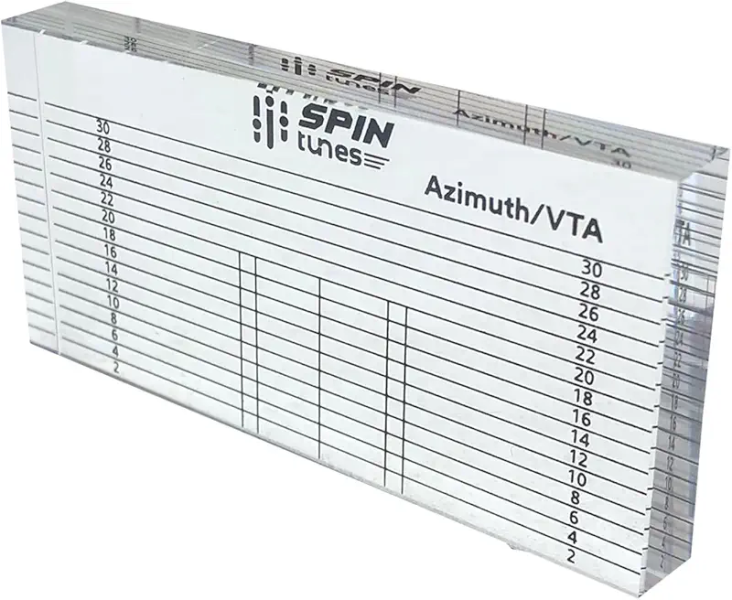Gents, a few points that might be helpful to you:
1. The test track for "VTA" is horizontally modulated (if memory serves me correctly) which means is it not useful for measuring VTA. SRA perhaps, but not VTA since VTA is only sensitive to vertical modulations. You cannot measure both from the same track as the mechanical distortion characteristics are VERY different from each other.
2. When you raise and lower the tonearm, the dominant distortion characteristics are thrown off by vector forces, not VTA or SRA. This will be clear to you if you use wedge shims at the headshell to impact your SRA and VTA. Yes, it is not ideal to have another material between your headshell and cartridge (or, more accurately, it is not ideal to add an additional join) but not all design parameters weigh equally on our sonic experience and I think you will be surprised when you start to play with this. Most all cartridges need to get DOWN, not up, in VTA.
3. I have analyzed several hundred cartridges. The average error from ideal VTA is 9 degrees from ideal and 7 degrees from maximum acceptable (dynamically measured at level headshell at height equaling height of cartridge under nominal VTF). We know what the goals are because we know what the various cutterhead vertical modulation angles are net of lacquer springback.
4. Since SRA has NEVER been truly scientifically studied and there are several reasons why it may not weigh equally to VTA in terms of audibility - particularly at low VTF - it deserves a deep dive. Our little research team is currently designing the experiment and accumulating the necessary equipment but may not commence with it until our zenith error study has been submitted for publication.
5. There is no such thing as "zenith angle". There is "zenith error" and there is "zenith error correction", but these things do not replace "offset angle" which is what most people mean when they say "zenith". I must admit some responsibility for this as I may have carelessly used the term in that manner in the early days we were researching zenith error. Sorry about that!
1. The test track for "VTA" is horizontally modulated (if memory serves me correctly) which means is it not useful for measuring VTA. SRA perhaps, but not VTA since VTA is only sensitive to vertical modulations. You cannot measure both from the same track as the mechanical distortion characteristics are VERY different from each other.
2. When you raise and lower the tonearm, the dominant distortion characteristics are thrown off by vector forces, not VTA or SRA. This will be clear to you if you use wedge shims at the headshell to impact your SRA and VTA. Yes, it is not ideal to have another material between your headshell and cartridge (or, more accurately, it is not ideal to add an additional join) but not all design parameters weigh equally on our sonic experience and I think you will be surprised when you start to play with this. Most all cartridges need to get DOWN, not up, in VTA.
3. I have analyzed several hundred cartridges. The average error from ideal VTA is 9 degrees from ideal and 7 degrees from maximum acceptable (dynamically measured at level headshell at height equaling height of cartridge under nominal VTF). We know what the goals are because we know what the various cutterhead vertical modulation angles are net of lacquer springback.
4. Since SRA has NEVER been truly scientifically studied and there are several reasons why it may not weigh equally to VTA in terms of audibility - particularly at low VTF - it deserves a deep dive. Our little research team is currently designing the experiment and accumulating the necessary equipment but may not commence with it until our zenith error study has been submitted for publication.
5. There is no such thing as "zenith angle". There is "zenith error" and there is "zenith error correction", but these things do not replace "offset angle" which is what most people mean when they say "zenith". I must admit some responsibility for this as I may have carelessly used the term in that manner in the early days we were researching zenith error. Sorry about that!






